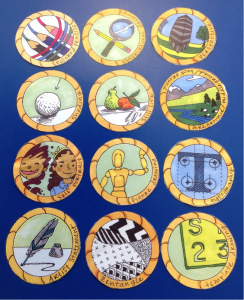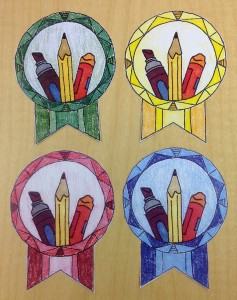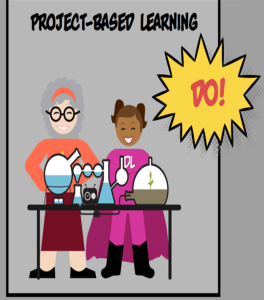Growing up in rural Pennsylvania I was extremely active in Girl Scouting. One of the joys of scouting was earning badges. Badging required me to fulfill a variety of criteria, skills, goals, and objectives in all areas of life. From drawing and painting to sewing and photography, I learned skills that are the basis for my teaching career to this day! Earning badges and awards (specifically the First Class award, equivalent to the Boy Scouts Eagle Award) and receiving it demonstrated to me the skills I had acquired and the honor of receiving the badge or award validated that fact.
 www.pinterest.com/explore/girl-scout-badges/
www.pinterest.com/explore/girl-scout-badges/
When Nina Chamberlain, my teaching associate at the time, returned from the 2015 National Art Education Association conference held in New Orleans, she brought back the idea of “badging” to our art classroom. I was totally on board with using them within the Choice-Art studios! She hand-drew over 100 badges for the 10 studios we have in the Choice-Art Studios. We had a “soft opening” last year, awarding the badges to students who demonstrated specific skills with materials, techniques, or concepts in the studios. A big THANK YOU to Nina! Thank you for sharing your talent. I couldn’t have done it without you!
Photo by Pat Kerner, Art by Nina Chamberlain
This year I have taken the art of badging to the next level. I have developed learning progressions in each of the 10 studios. After demonstrating their skill earning specific badges and fulfilling the criteria in a studio, the student can earn a “ribbon” signifying their attainment of the skills at that level of the learning progression. The Green ribbon signifies the “Novice” level, then comes the Yellow Ribbon for the “Emerging” level, after that is the Red Ribbon for the “Proficient” level, and finally the Blue ribbon for the “Advanced” level. In some studios, such as the Architecture studio, I have changed the names of the levels to reflect historical terminology: Novice, Apprentice, Journeyman, and Master Architect.
Photo by Pat Kerner, Art by Nina Chamberlain
Students have enthusiastically embraced the earning of badges and ribbons, and I am finding their motivation and engagement has increased. Many students are determined to earn all of the badges and subsequent ribbons in a studio to become a master of their craft!
Little did I know that when I was a Junior, Cadette, and Senior Girl Scout that badging would come full circle and become a focus for my work with students in the arts!








